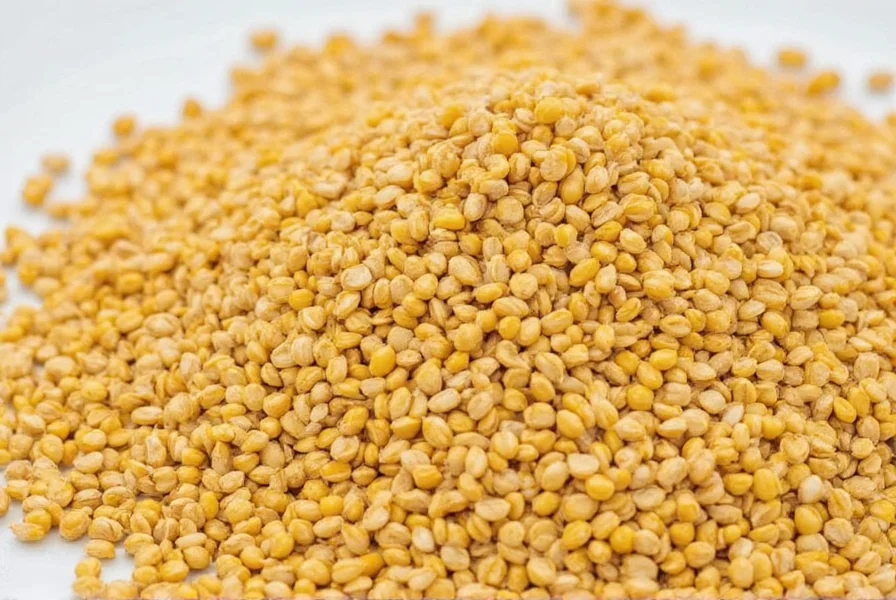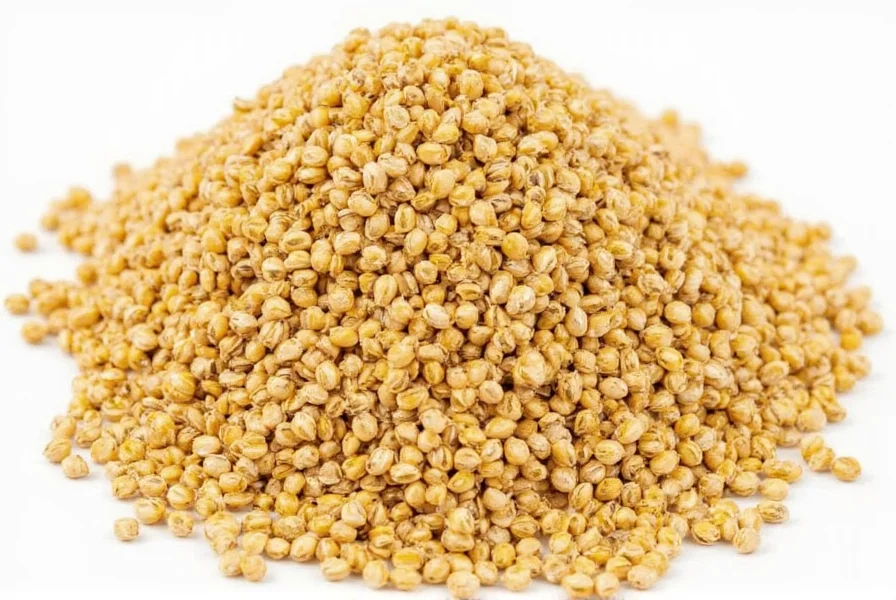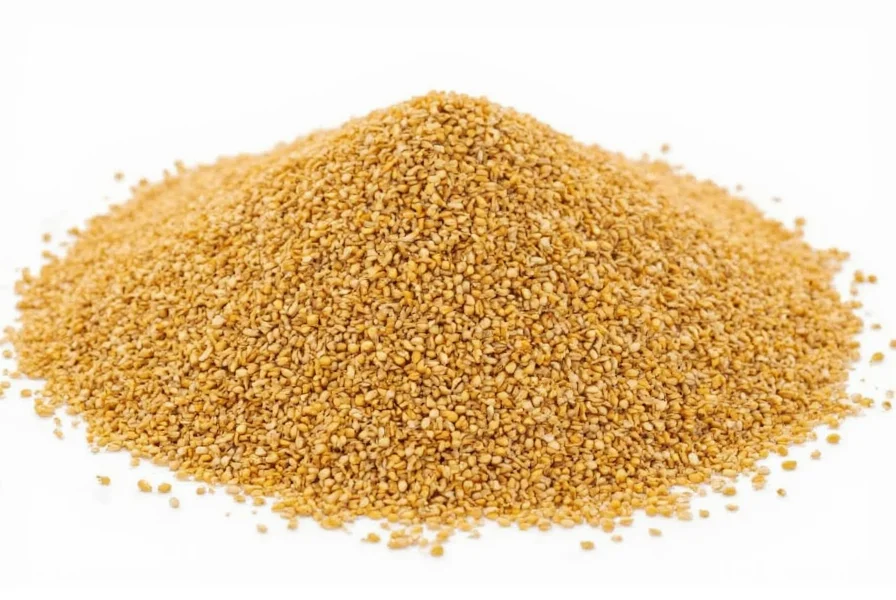When you're preparing traditional Indian, Ethiopian, or Middle Eastern dishes and realize you're out of fenugreek seeds, finding an appropriate replacement becomes crucial to maintaining authentic flavor profiles. Fenugreek seeds (Trigonella foenum-graecum) offer a unique combination of bitter, nutty, and slightly sweet notes with maple-like undertones that are difficult to replicate exactly. However, several practical alternatives can help you salvage your recipe without compromising quality.
Understanding Fenugreek Seeds and Their Culinary Role
Fenugreek seeds, known as methi dana in Indian cuisine, serve as both a spice and medicinal ingredient with centuries of culinary tradition. These small, amber-colored seeds contain natural compounds that create their signature flavor profile—bitter when raw but transforming into complex sweet, nutty notes when properly toasted. Professional chefs and home cooks rely on fenugreek seeds for authentic curry bases, pickling blends, and spice mixes like panch phoron.
When seeking a fenugreek seed replacement, consider which aspect of its flavor profile matters most for your specific recipe. Are you trying to replicate the bitter backbone of a traditional curry? The distinctive aroma in a lentil dish? Or the subtle sweetness in a baked good? Your answer determines the most appropriate substitute.
Top Fenugreek Seed Substitutes Ranked by Effectiveness
1. Maple Syrup (Best for Cooked Dishes)
Surprisingly effective for replicating fenugreek's sweet undertones, pure maple syrup works particularly well in cooked dishes where the raw bitterness of fenugreek would mellow during preparation. Use 1/2 teaspoon of maple syrup per teaspoon of fenugreek seeds called for in your recipe.
Best applications: Curries, stews, and braised dishes where fenugreek's bitterness would cook out. Particularly effective in tomato-based sauces and lentil preparations.
Limitations: Doesn't provide the textural element of whole seeds, and won't work in dry spice blends or uncooked applications. Avoid using in recipes requiring the distinctive fenugreek aroma.
2. Mustard Seed and Celery Seed Blend (Best All-Purpose Substitute)
A 1:1 ratio of yellow mustard seeds to celery seeds creates a surprisingly accurate flavor profile that mimics fenugreek's complex bitterness with herbal notes. Toast the blend lightly before use to enhance the flavor replication.
Best applications: Indian curries, vegetable stir-fries, and spice blends where fenugreek's bitterness plays a supporting role rather than dominating the flavor profile.
Pro tip: For every teaspoon of fenugreek seeds required, use 1/2 teaspoon yellow mustard seeds plus 1/2 teaspoon celery seeds. Add a pinch of asafoetida (hing) for enhanced authenticity in Indian recipes.
3. Fenugreek Leaves (Kasuri Methi)
Dried fenugreek leaves offer a more subtle version of the seed's flavor profile with less bitterness and more herbal notes. Use 1 tablespoon of crushed dried leaves per teaspoon of seeds.
Best applications: Finishing touch for finished curries, breads, and doughs where you want fenugreek flavor without the pronounced bitterness of the seeds.
Important note: This isn't a direct substitute but works well when you need the characteristic fenugreek aroma without the intense bitterness of the seeds.
4. Fennel Seeds with a Touch of Bitter Almond
For recipes where fenugreek's sweet notes dominate, combine fennel seeds with a tiny amount of bitter almond extract (use sparingly—1-2 drops per teaspoon of seeds). The fennel provides the sweet base while the almond extract mimics fenugreek's distinctive bitterness.
Best applications: Baked goods, sweet curries, and certain Middle Eastern spice blends where fenugreek plays a supporting sweet role.
| Substitute | Ratio | Best For | Limitations |
|---|---|---|---|
| Maple Syrup | 1/2 tsp per tsp of seeds | Cooked dishes, tomato-based sauces | No texture, no raw application |
| Mustard/Celery Seed Blend | 1/2 tsp each per tsp of seeds | Curries, vegetable dishes | Slightly different flavor profile |
| Dried Fenugreek Leaves | 1 tbsp per tsp of seeds | Finishing dishes, breads | Milder flavor, not direct substitute |
| Fennel Seeds + Bitter Almond | 1 tsp fennel + 1-2 drops almond | Sweet applications, baked goods | Not suitable for savory dishes |
Cuisine-Specific Substitution Guidance
Different culinary traditions use fenugreek seeds in distinctive ways, requiring tailored substitution approaches:
Indian Cuisine Substitutions
In Indian cooking, fenugreek seeds appear in tempering (tadka), spice blends, and pickles. For tadka applications, the mustard-celery seed blend works best. When making panch phoron, replace fenugreek with additional nigella seeds. For pickling, use a combination of mustard seeds and a small amount of turmeric to approximate the color and bitterness.
Ethiopian Berbere Spice Blend
Fenugreek appears in traditional berbere spice mixtures. When substituting in this context, use equal parts paprika and cumin with a pinch of ground cloves to approximate the complex flavor profile without the distinctive fenugreek notes.
Common Substitution Mistakes to Avoid
Many home cooks make critical errors when replacing fenugreek seeds that compromise their dishes:
- Using too much substitute: Fenugreek's bitterness can dominate, so start with 50-75% of the recommended substitute amount and adjust to taste
- Skipping the toasting step: For seed-based substitutes, always toast lightly in dry pan before use to release essential oils
- Using artificial maple flavoring: Pure maple syrup works; artificial syrups create off-flavors in savory dishes
- Substituting in raw applications: Most substitutes only work in cooked dishes where flavors can meld
Storage Tips for Fenugreek and Substitutes
To maximize shelf life of both fenugreek seeds and your substitute ingredients, store them in airtight containers away from light and heat. Whole seeds maintain potency for 2-3 years when properly stored, while ground substitutes should be used within 6 months. For the mustard-celery seed blend, toast and grind the seeds just before use for optimal flavor replication.

When No Substitute Will Suffice
Certain traditional dishes rely so heavily on fenugreek's unique chemical composition that substitutes cannot adequately replicate the authentic experience. These include:
- Authentic methi maaz (lamb curry with fenugreek)
- Traditional kasundi mustard pickle from Bengal
- Certain Ethiopian wot stews where fenugreek is the dominant flavor
In these cases, consider making a special trip to an Indian or Middle Eastern grocery store, as fenugreek seeds are widely available and relatively inexpensive. A small investment in the authentic ingredient often yields significantly better results than substitutions.

Final Thoughts on Fenugreek Seed Substitution
Finding the right substitute for fenugreek seeds requires understanding both your recipe's flavor requirements and the limitations of available alternatives. The mustard-celery seed blend provides the most versatile solution for savory dishes, while maple syrup works surprisingly well in cooked applications where fenugreek's bitterness mellows. Remember that successful substitution depends on adjusting quantities based on your specific recipe and personal taste preferences—always taste as you cook and adjust accordingly.
Frequently Asked Questions
Can I use fenugreek powder instead of fenugreek seeds?
Yes, use 3/4 teaspoon of fenugreek powder for every 1 teaspoon of whole fenugreek seeds. Keep in mind that the powder delivers more concentrated flavor since the seeds have already been ground, so you'll need less quantity. Powder works best in wet applications like curries and sauces, but won't provide the textural element of whole seeds in tempering.
What's the best substitute for fenugreek seeds in vegan recipes?
For vegan applications requiring fenugreek's characteristic flavor, the mustard-celery seed blend works exceptionally well. Combine equal parts yellow mustard seeds and celery seeds, toast lightly, then use at a 1:1 ratio to replace fenugreek seeds. This combination provides the necessary bitterness and herbal notes without any animal products, making it ideal for vegan curries and vegetable dishes.
How do I substitute fenugreek seeds in bread recipes?
For breads and flatbreads requiring fenugreek seeds, use dried fenugreek leaves (kasuri methi) as your best substitute. Crush 1 tablespoon of dried leaves to replace 1 teaspoon of seeds. The leaves provide similar aromatic qualities without the intense bitterness that might overwhelm delicate bread flavors. Alternatively, a small amount of maple syrup (1/4 teaspoon per teaspoon of seeds) can replicate the sweet undertones in enriched breads.
Can I use curry powder as a substitute for fenugreek seeds?
Curry powder makes a poor direct substitute for fenugreek seeds since most blends contain only small amounts of fenugreek among many other spices. However, if your curry powder contains fenugreek as an ingredient, you can use 1.5 teaspoons of curry powder to replace 1 teaspoon of fenugreek seeds, but reduce other spices in your recipe accordingly to avoid flavor imbalance.
Why does my substitute not taste like fenugreek even when following recommendations?
Fenugreek contains unique chemical compounds that create its distinctive flavor profile, which no single substitute can perfectly replicate. The bitterness comes from saponins, while the maple-like sweetness derives from-cmpr











 浙公网安备
33010002000092号
浙公网安备
33010002000092号 浙B2-20120091-4
浙B2-20120091-4